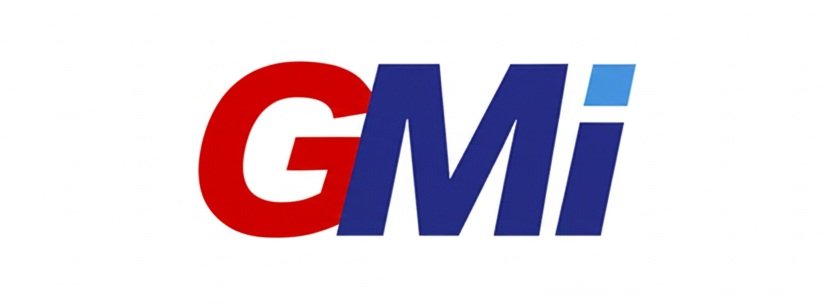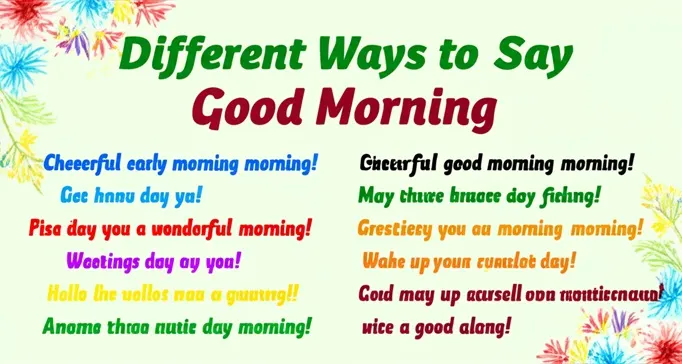Saying “good morning” is a tiny day by day ritual that units the tone for the relaxation of the day. But after some time, the same old phrase can experience stale — particularly if you’re texting, writing, or greeting humans from exceptional cultures. This article explains how to say good morning in different ways, with over 50 variations for casual chats, professional settings, romantic moments, and worldwide greetings.
Table of Contents
Why vary your morning greeting?
People respond to nuance. A slightly different greeting can:
- Convey warmth or professionalism depending on context.
- Strengthen social bonds (friends, family, partners).
- Show cultural awareness (using local language variants).
- Avoid sounding robotic in messages or at work.
Whether you’re learning how to say good morning in different ways to keep things fresh or to tailor your tone for a specific relationship, this guide will give you clear, ready-to-use alternatives.
Quick Categorized Lists: Use-Anywhere Alternatives
Below are short lists you can skim for immediate use. Each category has greetings suited to that setting.
Casual / Friendly
- Morning!
- Hey — good morning!
- Rise and shine!
- Morning, sunshine!
- Top of the morning to you!
Professional / Polite
- Good morning — I hope you’re well.
- Morning — hope your day is off to a good start.
- Good morning, team.
- Wishing you a productive morning.
- Good morning — quick question when you have a moment.
Romantic / Intimate
- Good morning, love.
- Morning, my favorite person.
- Wake up, beautiful.
- Good morning — thinking of you.
- Hello, my sunshine.
Energetic / Playful
- Wakey, wakey!
- Greetings, day conqueror!
- Hello, world — it’s a new day!
- Up and at ’em!
- Coffee o’clock!
How to Say Good Morning in Different Ways: Phrases for Specific Channels
Different channels call for different words. Texts, emails, and in-person greetings each have their own tone.
Text messages and DMs
Texting is informal and quick. Try these:
- Morning! ☀️
- Hey — morning! How’d you sleep?
- Good morning! Ready for today?
- ‘Sup? Good morning 🙂
- Morning — coffee yet?
Tips: Use an emoji if it fits the relationship. Keep it short for groups, more personal for individuals.
Emails and Formal Messages
For business or formal writing, pick clarity and professionalism:
- Good morning — I hope this message finds you well.
- Good morning, [Name]. Thank you for your time today.
- Good morning — following up on…
- Good morning — brief update attached.
Tip: In formal contexts, include the recipient’s name and a polite opener.
In-person interactions
For office, neighbors, or acquaintances:
- Good morning!
- Morning — how are you?
- Lovely morning, isn’t it?
- Good morning — how was your evening?
Tip: A smile and eye contact matter more than the exact words.
Global Ways to Say Good Morning
Using local greetings shows cultural respect. Below are common variations in widely spoken languages — handy when traveling or greeting multilingual friends.
- Spanish: Buenos días
- French: Bonjour
- German: Guten Morgen
- Italian: Buongiorno
- Portuguese: Bom dia (Brazil/Portugal)
- Japanese: おはようございます (Ohayō gozaimasu) — polite; おはよう (Ohayō) — casual
- Chinese (Mandarin): 早上好 (Zǎoshang hǎo) or 早安 (Zǎo ān)
- Korean: 좋은 아침이에요 (Joh-eun achim-ieyo) — polite; 안녕하세요 (Annyeonghaseyo) works any time of day
- Hindi: सुप्रभात (Suprabhat) or सुप्रभातम्
- Arabic: صباح الخير (Sabah al-khair) — reply: صباح النور (Sabah al-noor)
Tip: Pronunciation varies; using even a simple foreign greeting is usually appreciated if delivered respectfully.
Creative and Contextual Alternatives
Here are alternatives organized by tone and situation so you can pick the right phrase without thinking too hard.
For coworkers and meetings
- Good morning — let’s get to it.
- Morning, everyone — quick stand-up in five.
- Good morning — I’ve shared the agenda.
- Morning colleagues — happy to be here.
For parents and kids
- Morning, sleepyhead!
- Time to rise, little star!
- Morning, champ — breakfast time.
- Wakey-wakey, eggs and bakey!
For social media/creative posts
- Hello, morning — new day, new goals.
- Good morning — let’s make magic happen today.
- Sunrise check-in — how are you feeling today?
For wellness and mindfulness
- Good morning — breathe in, breathe out.
- Gentle morning — may your day be calm.
- Morning — set one intention for today.
Tone Matters: Match the Greeting to the Relationship
Knowing how to say good morning in different ways goes beyond words — tone and delivery change meaning.
- Casual friends: Use playful, short greetings (“Morning!”). Add an emoji in texts.
- Acquaintances: Stick to neutral greetings (“Good morning”). Keep it brief.
- Professional: Use formal phrases with names and context. Avoid slang.
- Romantic partners: Use affectionate or personal phrases (“Good morning, my heart”).
- Children: Use playful or silly phrases to make mornings fun.
Pro tip: If you’re unsure, default to a warm, neutral greeting; you can always adjust over time.
Use Cases: Examples You Can Copy-Paste
To make this immediately useful, here are ready-made examples you can adapt.
Quick text to a partner
Good morning, love — hope your day is as amazing as you are.
Slack message to a team
Good morning, team. Quick reminder: demo at 10 AM. See you there!
Email opener to a client
Good morning, [Client Name]. I hope you’re well. I’m writing to follow up on our proposal.
Social media caption
Good morning, everyone! What’s one goal you’re setting today?
These snippets show practical ways how to say good morning in different ways according to purpose.
Cultural Sensitivity & Etiquette
When using greetings from other cultures, be mindful:
- Pronunciation: Try your best but don’t force it. Mistakes are usually forgiven if you’re respectful.
- Formality: Some languages have formal vs. informal forms (e.g., Japanese ohayō gozaimasu vs ohayō). Choose correctly.
- Context: Certain phrases carry cultural connotations—use them appropriately.
- Time zone awareness: Don’t send “Good morning” very late if the other person is already in afternoon; check local time when messaging internationally.
Being mindful shows cultural competence — and competence builds trust.
Examples from Real Life: Small Studies & Observations
Experienced communicators notice patterns:
- Short greetings work best for quick exchanges and group chats.
- Personalization (using a name or small detail) increases positive responses.
- Adding a simple question after the greeting (e.g., “Good morning — how are you?”) turns a greeting into a conversation starter.
- Emojis and GIFs increase warmth in informal digital contexts but are usually avoided in formal communication.
These are observational insights based on common communication practices. Use them to test what works with your audience.
FAQs: How to Say Good Morning in Different Ways
Q: How many times should I change my morning greeting?
A: There’s no fixed rule. Rotate greetings to keep them fresh—use variety weekly or whenever you feel a phrase becoming routine. The goal is authenticity, not novelty for novelty’s sake.
Q: Is “Morning” rude compared to “Good morning”?
A: Not necessarily. “Morning” is a casual shorthand and usually acceptable among peers. In formal contexts, prefer “Good morning.”
Q: Can I use emojis with morning greetings at work?
A: Only if your workplace is informal and uses emojis regularly. When in doubt, skip them in client-facing or formal messages.
Q: Should I use local language greetings when traveling?
A: Yes — a simple native greeting shows respect and can create positive interactions. Even a short “Buenos días” or “Bonjour” goes a long way.
Q: What are some good alternatives for someone who’s not a morning person?
A: Try low-energy, pleasant phrases like “Good morning — hope you slept well” or “Morning — take it easy today.” They’re empathetic without being overly cheery.
Q: How can I sound authentic when using different greetings?
A: Match your natural speech patterns. If a phrase feels forced, adapt it to your voice. Personalization (name, detail) helps authenticity.
Quick Reference: 50+ Ways to Say Good Morning (One List)
For fast lookup, here’s a consolidated list. Mix and match as needed.
- Good morning
- Morning
- Hey — good morning
- Rise and shine
- Morning, sunshine
- Top of the morning to you
- Wakey-wakey
- Hello — good morning
- Good morning, [Name]
- Good morning — hope you’re well
- Morning, team
- Morning — quick update
- Good morning, love
- Wake up, beautiful
- Hello, my sunshine
- Morning, champ
- Time to rise
- Good morning — let’s do this
- Good morning — quick question
- Good morning — thank you for joining
- Buenos días
- Bonjour
- Guten Morgen
- Buongiorno
- Bom dia
- おはようございます (Ohayō gozaimasu)
- 早上好 (Zǎoshang hǎo)
- 좋은 아침이에요 (Joh-eun achim-ieyo)
- सुप्रभात (Suprabhat)
- صباح الخير (Sabah al-khair)
- Morning! ☀️
- Wakey, wakey!
- Up and at ’em!
- Greetings — new day!
- Good morning — breathe and begin
- Gentle morning — may it be kind
- Good morning — how did you sleep?
- Morning — ready for coffee?
- New day, new chances — good morning
- Hello, morning — let’s go
- Good morning — thinking of you
- Morning, hope you feel great
- Good morning, neighbor
- Morning, friend — how’s it going?
- Good morning — any plans today?
- Morning — big day today?
- Morning — hope your commute’s easy
- Morning — sending good vibes
- Rise up — good morning
- Good morning — make it a good one
Final Tips to Keep Your Greetings Fresh and Effective
- Be concise. Long-winded greetings can feel formal or awkward—match length to the context.
- Personalize. Use a name or a small detail to increase warmth.
- Be mindful of time zones. Avoid sending morning messages when it’s late elsewhere.
- Match platform tone. Emails, Slack, and text messages all have different norms.
- Practice pronunciation. If you use foreign greetings, practice a little to sound respectful.
- Be authentic. If a phrase doesn’t feel like you, tweak it until it does.
Conclusion
Knowing how to say good morning in different ways gives you a tiny but effective device: the capability to shape someone’s day with tone, warm temperature, and cultural sensitivity. From a short “Morning!” In a set chat to a heartfelt “Good morning, love,” the proper word relies upon your relationship, the platform, and the occasion. Use this manual as a reference, strive for unique patterns, and word how human beings reply—their reactions will tell you which of them greetings land best.
Also Read About: 55+ Beautiful Good Morning Images with Positive Words for Daily Inspiration



